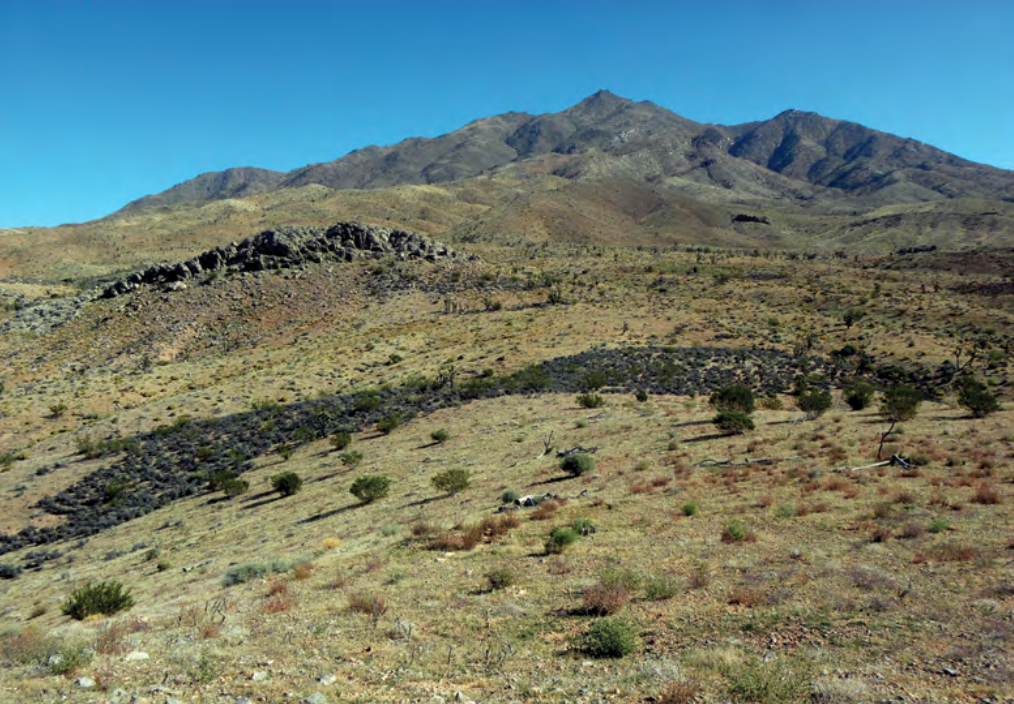
ST. GEORGE – A local conservation group will be helping restore tortoise habitat hit by devastating wildfires by assisting in planting native shrubs and grasses in two local national conservation areas, and they are seeking additional assistance for the project on Nov. 5 or Nov. 19.

In 2005-2006, wildfires destroyed about 25 percent of the tortoise habitat within the Red Cliffs and Beaver Dam Wash national conservation areas. The result was a sharp drop in tortoise populations — up to 50 percent.
Seeding of native species has been tried in the past but was not successful because the seeds dried out, were blown away or were eaten. Turning the soil to bury the seeds isn’t an option because it risks harming the burrowing tortoises.
Biologists are hopeful that planting established native plant species will work. Native shrubs and grasses will be planted in islands, which, when established, will hopefully provide seeds which will spread to the surrounding area.
If the project is successful, it will be expanded to other areas of tortoise habitat, biologist Ann McLuckie of the Utah Division of Wildlife Resources said in an earlier interview.
Read more: Habitat restoration project underway in fire-ravaged tortoise habitat
The Mohave desert landscape is not adapted to wildfires, and invasive species like cheat grass have made the land vulnerable by providing vegetation that carries fire between shrubs like creosote, which are naturally fire-resistant. This has biologists searching for ways to restore damaged habitat.

Approximately 10,000 native plants for the project have been growing in a nursery at the Lake Mead National Recreation Area, part of a joint project with University of Nevada Las Vegas professor Scott Abella.
Creosote and white bursage, several grass species and intermediate plants like globemallow, desert four-o’clock and desert marigold are among the native species which will be planted.
The project will track the number of plants that survive in each plot, the impact of native plants on non-native plants, different planting methods and the most cost-effective methods.
Two 100-acre plots have been chosen for the project, both of which were severely affected by fire.
One plot is along Cottonwood Road in the Red Cliffs Desert Reserve, an area that has been overrun with cheat grass and Russian thistles — also known as tumbleweeds.
The other test plot is located in the Woodbury-Hardy study area in the Beaver Dam Wash National Conservation Area. This area has also been burned and currently isn’t even supporting cheat grass, McLuckie said. The goal is to plant 5,000 native plants at each site.

“Each of these revegetated plots will create fertile islands which will act as seed banks from which native plants can disperse to adjacent burned areas,” McLuckie said.
The project is a cooperative effort between several agencies and organizations, including U.S. Fish and Wildlife Service, Utah Watershed Restoration Initiative, The Nature Conservancy, Bureau of Land Management, Utah Division of Wildlife Resources and Washington County Habitat Conservation Plan.
Volunteers needed
Conserve Southwest Utah and The Nature Conservancy are coordinating volunteer recruiting for two separate planting days to assist interns from American Conservation Experience.
Volunteers are needed to help with planting Nov. 5 and Nov. 19. Everyone who volunteers will attend a brief orientation and training at 9 a.m. Participants will either help plant or build chicken-wire cages to protect the young plants.
Volunteers should wear field clothes, a sun hat, sunglasses, boots or sturdy sneakers. They are asked to bring a digging shovel, wire cutters, work gloves, sunscreen and a water bottle. Snacks and water will be provided. The project is estimated to be done at approximately 1 p.m.
To participate, contact Andrea Nelson by email at [email protected]. Maps and directions will be provided to registered volunteers.
Email: [email protected]
Twitter: @STGnews
Copyright St. George News, SaintGeorgeUtah.com LLC, 2016, all rights reserved.
Dumpster, this is the perfect opportunity to give back. You don’t have a job, and have nothing to do but troll stgnews. Think about it. You can pop your pills and wander around the desert counting turtles, although they probably are faster than you. Good luck buddy!
You said it ! This is a perfect opportunity to give back. you don’t have a job. and have nothing to do but troll St George news. think about it. you can pop your pills and wander around the desert talking to turtles and getting them to register to vote. although they are smarter than you. good luck Bob’s ( special ) little buddy
LOL Dump, the rage and desperation is just flowing out of u with this one, try harder 😉
Awww poor little boob did I hurt your feelings
So this is it? Come in Dumpster, even you can do better. “I know you are but what am I”. LOL! Pathetic.
Awww you poor little thing did I hurt a nerve
If I wasn’t busy being jobless I would count turtles
Oh I don’t mind LOL ! it keeps them busy looking for any comments made by me. It’s free entertainment ….. it’s not like I got a job 2 go 2
Why don’t the two of you volunteer? Maybe the tortoises can teach you some manners.
Maybe you could volunteer mesaman. .oops never mind you have to be able to count